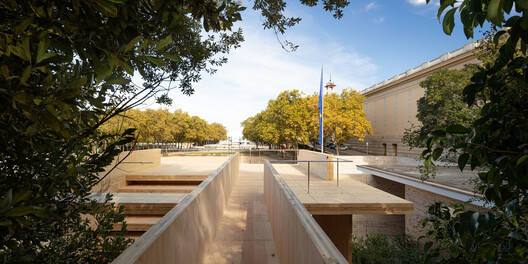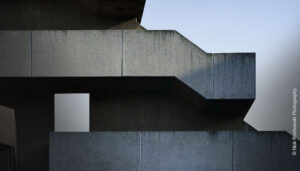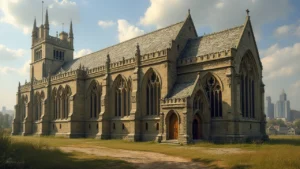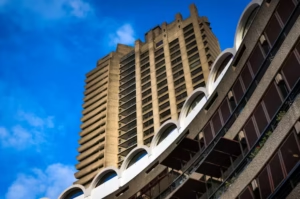Historic structures have embodied carbon and stories to tell. They run the risk of becoming carbon-stranded assets when they become obsolete or undergo inappropriate retrofits, losing both the carbon incorporated into their construction and their cultural worth. In order to protect these structures, Barcelona’s creative approach to climate data, which we now refer to as the Barcelona Method, is crucial. By fusing contemporary microclimate mapping with traditional architectural knowledge, this approach creates a compelling story of resiliency, legacy, and climate action.
Mapping the Microclimate: An Interpretation of Urban Heat Based on Data
Barcelona’s approach starts with spatial climate analytics, which maps pollution, air temperature, and land surface to pinpoint urban hotspots. For example, studies overlay air pollution levels like NO₂ to identify risk zones, map impervious land cover, and correlate it to heat susceptibility. These thorough maps direct measures to safeguard the most vulnerable buildings.
Mass is More / Institute for Advanced Architecture of Catonia + Bauhaus Earth. Image © Adria Goula
Ancestral Passive Design Preserves Heritage
In the following section, old knowledge meets modern data and design. Passive climate control was used in traditional architecture throughout the Mediterranean and many other parts of the world. Inward-facing courtyards, thick stone walls, lattice screens (mashrabiya), reflecting pools, and vegetation all functioned in concert to cool, ventilate, and buffer buildings without the need for energy inputs.
These once-forgotten components are making a comeback in contemporary bioclimatic design techniques. They offer background information and ideas for retrofitting historic buildings, bridging the gap between the past and climate resilience.
Image © Adria Goula
Sacred Space Microclimates: A Foundation of Science
In addition to being vulnerable to heat stress, heritage buildings also need to be protected from temperature changes that can harm materials and artwork. Thick walls naturally reduce temperature fluctuations, and keeping an eye on indoor humidity and temperature helps prevent mould, rot, and structural damage, according to studies like the one conducted on the Basilica of Santa Maria Maggiore in Rome.
Retrofits, such as under-bench radiant heating systems or controlled ventilation setups, can be guided by dynamic simulation based on indoor and outside data to ensure stability in energy and preservation objectives.
Loud Shadows, Plastique Fantastique image Courtesy of Marco Canevacci
The Barcelona Protocol: Micro Impact & Macrostrategies
The Barcelona Protocol establishes fundamental guidelines for a regenerative city strategy that goes beyond specific structures. Among its actions are:
- Completing building CO2 surveys throughout the city to determine the priority of retrofits
- Setting up microclimate monitoring to map pollutants and temperature will allow for more focused treatments.
- Encouraging lifecycle-based design, adaptive reuse, and the use of biomaterials to preserve carbon buried in structures
These pillars guarantee that conserving cultural heritage not only stops carbon loss but also strengthens carbon retention in the urban fabric.
Volvo Circle Pavilion / Studio Heech. Image © Jaeyi Kim
The Barcelona Method: From Theory to Heritage Practice
By combining data-driven mapping, policy frameworks, adaptive microclimate responses, and strategic site selection, you may create a strategy for preserving historic structures in the face of climate change. For instance:
- Shaded courtyards or ground-level evaporative cooling retrofits could be implemented in a centuries-old museum.
- Green facades on the outside of a mediaeval church could help lower UV loading and heat absorption inside.
- The “CO₂ census” rationale of the Barcelona Protocol could be used by municipal authorities to reinterpret heritage licenses to incorporate climatic data and retrofit requirements.
Involving the Audience: The Cultural and Human Effects
This method saves stories in addition to bricks. Heritage structures continue to be relevant as long as they are in use. Preservation becomes a cooperative endeavour when people are involved in adaptive reuse initiatives, such as planting vegetation or suggesting multipurpose uses, or climatic monitoring. The Barcelona Model demonstrates how climate action and heritage can coexist peacefully.
Final Thoughts: A Guide to Heritage Resilience
The Barcelona Method serves as a model for cities all around the world and is not simply about climate defence. Cities can guarantee that historic building is preserved as a living legacy rather than a stranded carbon sink by integrating climate data, inclusive adaptation, and heritage-first policy.
References
For more content like this CLICK HERE









